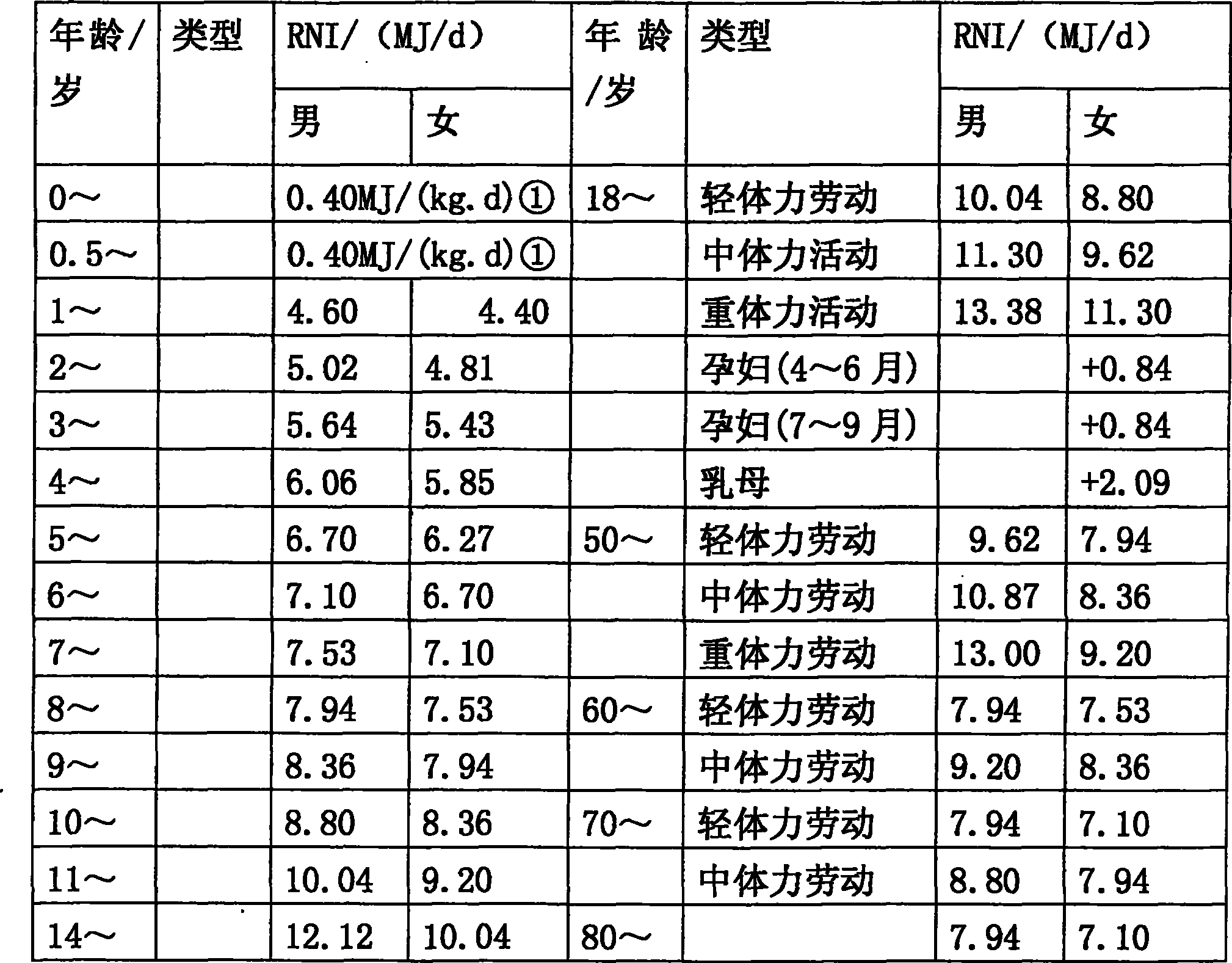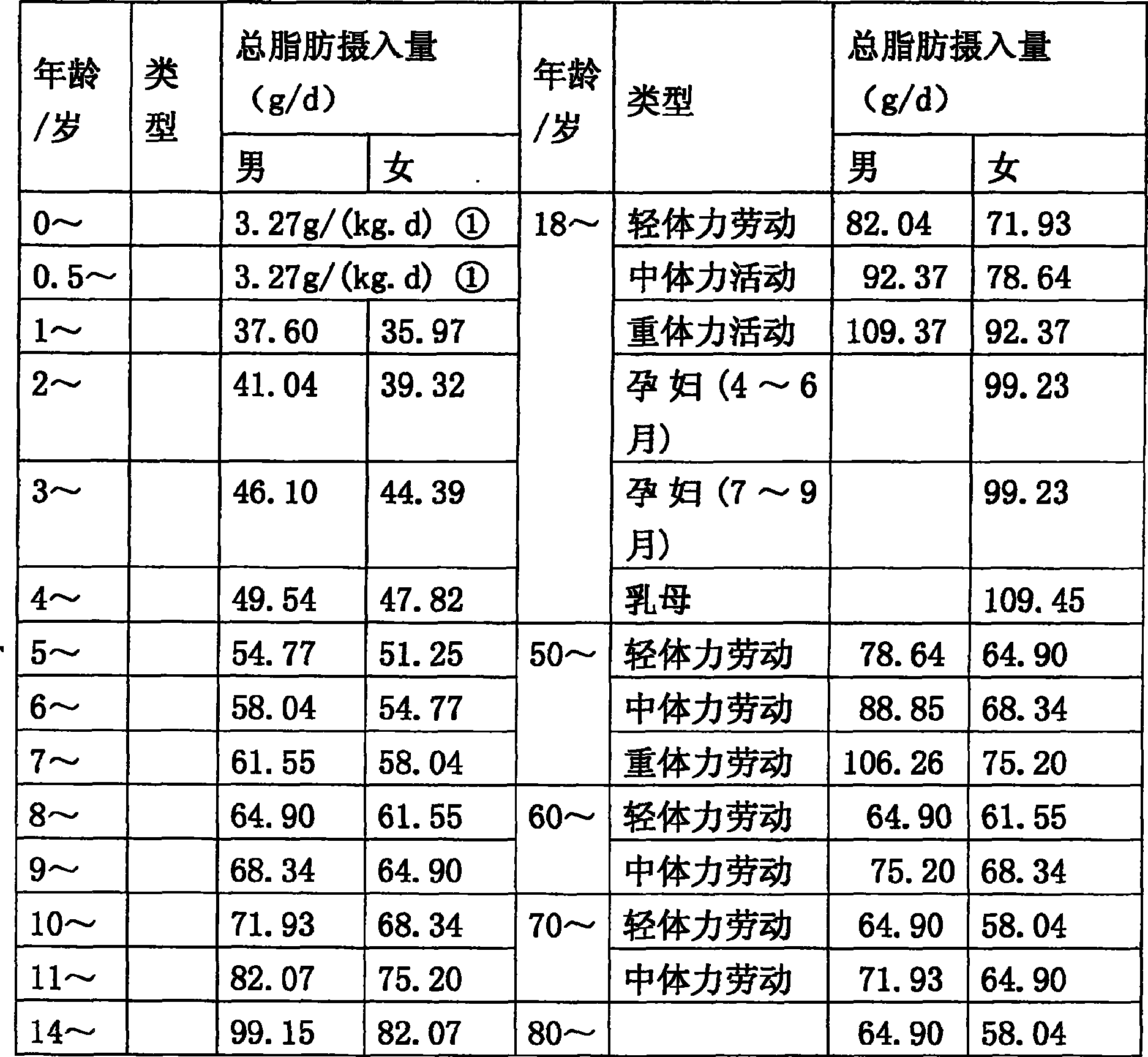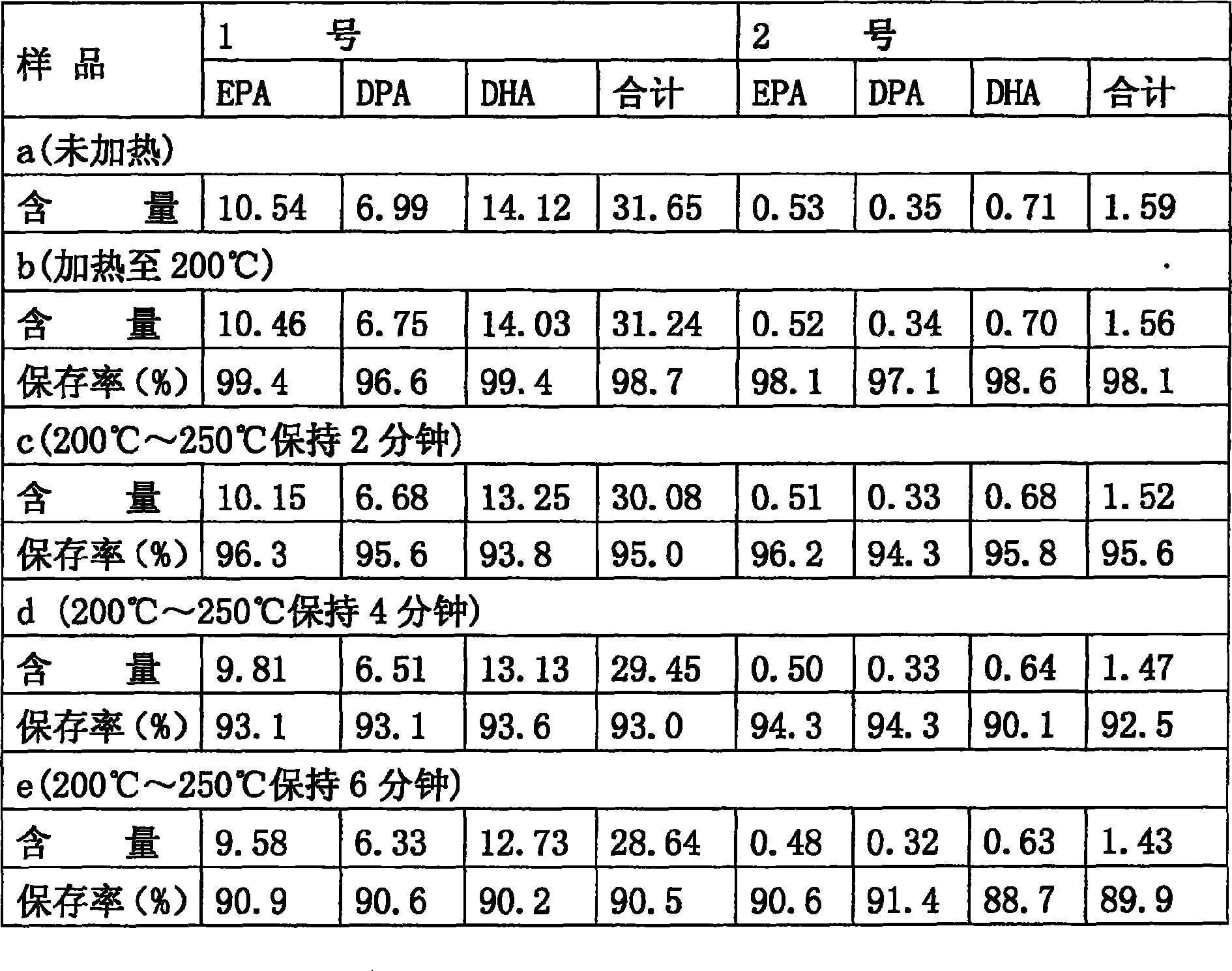Chinese patent CN1483336A discloses "balanced
nutrition blending oil", which stipulates that the content ratio of
monounsaturated fatty acid (MUFA) and
polyunsaturated fatty acid (PUFA) is 1:1, and the content ratio of
linoleic acid and α-
linolenic acid is 1:1. The ratio is 4-6:1, but the ratio of saturated fatty acids is not considered, nor is ω-3 long-chain
polyunsaturated fatty acid (ω-3LCPUFA) directly added;
Chinese patent CN1448061A discloses the production of the second-generation nutritional blending oil of Arowana method, although it considers the proportion of
saturated fatty acid (SFA),
monounsaturated fatty acid (MUFA) and polyunsaturated
fatty acid (PUFA), and also considers the content ratio of
linoleic acid and α-supplementing omega-3 series fatty acid
linolenic acid, But it has following defect: 1, do not directly add omega-3 long-chain polyunsaturated fatty acid (omega-3LCPUFA), the omega-3 long-chain polyunsaturated fatty acid (omega-3LCPUFA) needed by
human body is only made up of omega-3 It is obtained from the transformation of
linolenic acid in the human body and cannot meet the needs of the human body
4. Oils with different ingredients and proportions are not provided according to the needs of people of different ages and health conditions, and the proportion of ω-3 long-chain polyunsaturated fatty acids (ω-3 LCPUFA) obtained by different groups of people cannot be guaranteed to meet their own needs , there will inevitably be insufficient or excessive conditions, which can neither be effectively supplemented nor avoid its side effects
[0005]
Chinese patent application CN1398532A discloses "a preparation method of functional
olive oil concentrate", Chinese
patent application CN1398532A discloses "a functional olive high-grade
cooking oil and its preparation method", Chinese
patent application CN1191677A "a pure natural Although deep-sea
fish oil is added to the formula of "functional
edible oil", the above-mentioned
patent application has the following problems: 1. Whether the total amount and composition of fatty acids meet the requirements of
human nutrition balance is not considered, and the
daily intake of fatty acids by the human body is not divided into three types of fatty acids. The ratio of
saturated fatty acid (SFA): monounsaturated fatty acid (MUFA): polyunsaturated fatty acid (PUFA) = 1:1:1 is the premise of adding deep-sea
fish oil; 2. The content of DHA and EPA in deep-sea
fish oil was not analyzed, resulting in Replenishment amount is inaccurate
In practical applications, due to different manufacturers and specifications, the content and proportion of ω-3 long-chain polyunsaturated fatty acid (ω-3LCPUFA) DHA and EPA in fish oil are also different, so it is not added according to the accurately calculated DHA and EPA content. Deep-sea fish oil will inevitably lead to inaccurate supplementation, low or high levels; low levels cannot meet the physiological needs of the human body, and excessive intake will cause peroxidation reactions due to the unsaturated double bonds in its structure, resulting in lipid peroxides This is a kind of free radical, which is one of the risk factors for promoting aging and
cancer, and produces various chronic harms to the body. For example, if this
lipid peroxide appears in the
skin, it will form
lipofuscin and appear
senile plaques; if Appearing in cells weakens
cell function; excessive intake of unsaturated fatty acids in obese patients can easily cause cholelithiasis; studies have shown that the increase of
lipid peroxide in the blood is more important than the increase of
cholesterol in the formation of atherosclerosis more harmful
3. The content ratio of DHA and EPA added is unscientific and does not meet the needs of edible objects, and cannot meet the physiological needs of different groups of people
Therefore, the content ratio of DHA and EPA is unscientific, which may also affect the health of certain groups of people.
4. Fish does not belong to mammals, and only about 30% of its ω-3 polyunsaturated fatty acids (ω-3PUFA) are distributed outside the easily decomposed molecules, which are difficult to be decomposed and absorbed by the human body.
Fish oil only contains DHA and EPA. Generally does not contain DPA, and DPA plays an important role in growth and
human health; although the price of natural fish oil is lower than that of seal oil, but due to the high proportion of EPA content in it, when the EPA content is required to be low, it must be refined, which increases the production cost. cost
5. Although deep-sea fish oil containing ω-3 long-chain polyunsaturated fatty acids (ω-3 LCPUFA) has been added to the edible oils of the above three formulas, no heating
stability test has been carried out, and it is unknown how many components can be retained after cooking and heating
Adding seal oil to
edible oil makes
edible oil have health care function. There is no report of relevant research at home and abroad, and no industrialized production
 Login to View More
Login to View More  Login to View More
Login to View More 


